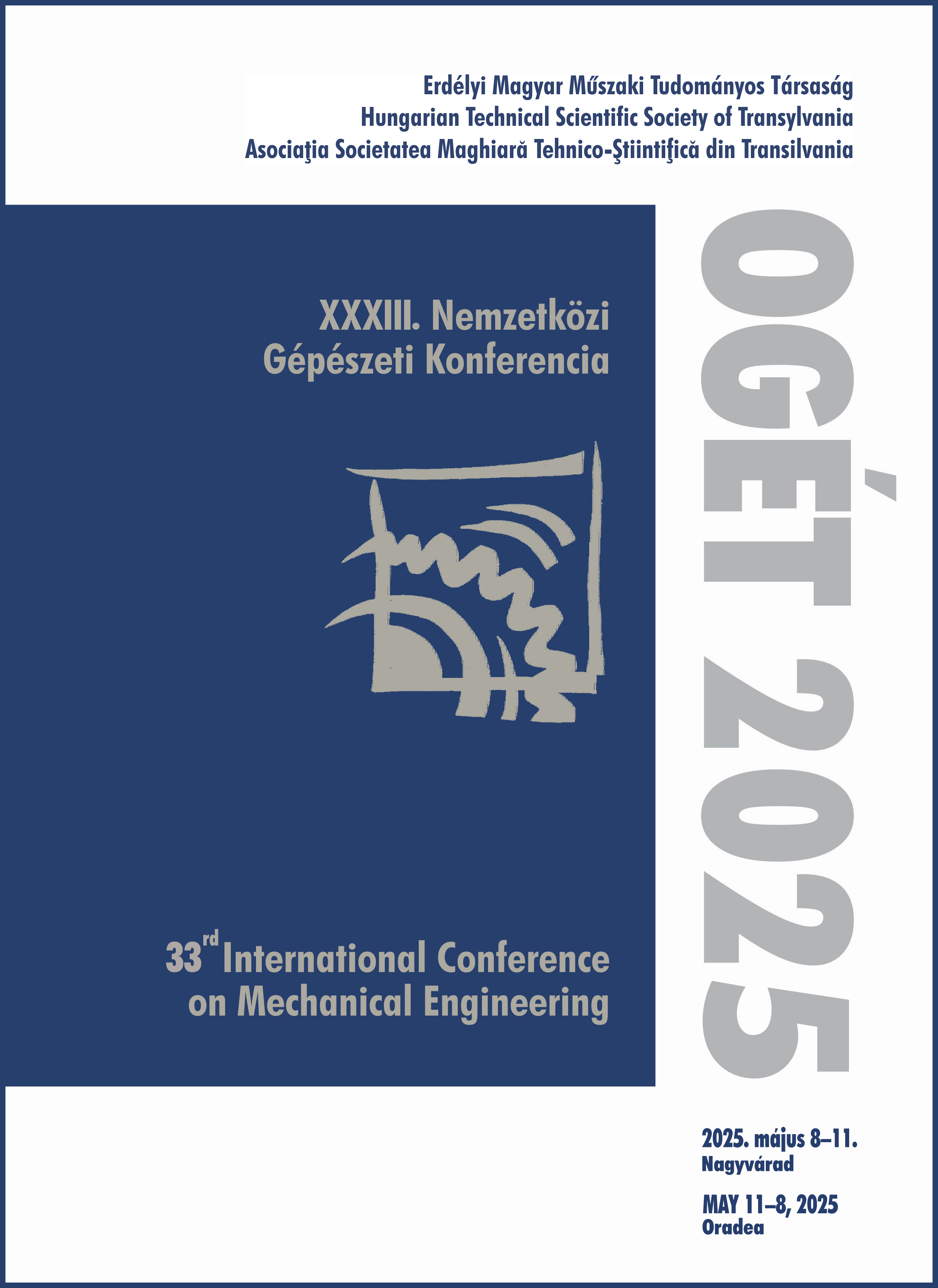A többlépéses pályatervezési stratégiák kísérleti vizsgálata egypontos inkrementális lemezalakításnál
Experimental Investigation of Multi-Step Path Planning Strategies in Single-Point Incremental Sheet Forming
Keywords:
Incremental forming, CNC, path planning, forming forces, formability limit, /, Inkrementális alakítás, pályatervezés, alakító erők, alakíthatósági határAbstract
Incremental sheet metal forming is a new type of machining method, where, unlike traditional plastic forming processes, it is not the pressing of the blank into a unique die that determines the geometry, but rather the path of a universal tool (punch) defines the geometry to be produced. One type of this process is single-point incremental sheet metal forming, where the single forming tool is moved along a predefined path, usually by a CNC milling machine or a robotic arm. During the machining process, the rotating tool gradually forms the workpiece by moving along spiral paths. The aim of my work is to investigate the effectiveness of different machining paths in multi-step strategies for expanding the formability limit.
Kivonat
Az inkrementális lemezalakítás egy újfajta megmunkálási módszer, amely során a hagyományos képlékeny alakító eljárásokkal ellentétben nem az előgyártmány egyedi matricára történő préselése, így annak geometriája, hanem egy univerzális szerszám (bélyeg) pályája hozza létre a kialakuló geometriát. Ennek egy fajtája az egypontos inkrementális lemezalakítás, amely során az egyetlen alakító szerszámot egy előre definiált pályán mozgatja általában egy CNC megmunkáló központ vagy robotkar. A megmunkálás során a forgó szerszámmal spirális pályákon haladva fokozatosan alakítják ki a munkadarabot. A munkám célja, hogy megvizsgáljam a többlépéses stratégiák különböző megmunkálási pályáinak hatékonyságát az alakíthatósági határ kibővítésére vonatkozólag.
References
M. Tisza and P. Kovács, ‘INNOVATÍV ALAKÍTÓ ELJÁRÁSOK – INKREMENTÁLIS LEMEZALAKÍTÁS’. GÉP, LXI. évfolyam, 2010., 2010.
I. Paniti, ‘A lemezalapú gyors prototípusgyártás új módszerei’. Pattantyús-Ábrahám Géza Gépészeti TudományokDoktoriIskola,2014.[Online].Available: http://doktori.bme.hu/bme_palyazat/2014/honlap/Paniti_Imre_hu.htm
H. K. Nirala, P. K. Jain, J. J. Roy, M. K. Samal, and P. Tandon, ‘An approach to eliminate stepped features in multistage incremental sheet forming process: Experimental and FEA analysis’, J. Mech. Sci. Technol., vol. 31, no. 2, pp. 599–604, Feb. 2017, doi: 10.1007/s12206-017-0112-6.
M. Skjoedt, N. Bay, B. Endelt, and G. Ingarao, ‘Multi Stage Strategies for Single Point Incremental Forming of a Cup’, Int. J. Mater. Form., vol. 1, no. 1, pp. 1199–1202, Apr. 2008, doi: 10.1007/s12289-008-0156-3.
J. Verbert et al., ‘Multi-Step toolpath approach to overcome forming limitations in single point incremental forming’, Int. J. Mater. Form., vol. 1, no. 1, pp. 1203–1206, Apr. 2008, doi: 10.1007/s12289-008-0157-2.
S. Wu, Y. Ma, L. Gao, Y. Zhao, S. Rashed, and N. Ma, ‘A novel multi-step strategy of single point incremental forming for high wall angle shape’, J. Manuf. Process., vol. 56, pp. 697–706, Aug. 2020, doi: 10.1016/j.jmapro.2020.05.009.
B. Marton, ‘A szerszámpálya hatásának kísérleti vizsgálata egypontos inkrementális lemezalakítás során’, BME, Budapest, 2024.
F. Maaß, M. Hahn, and A. E. Tekkaya, ‘Interaction of Process Parameters, Forming Mechanisms, and Residual Stresses in Single Point Incremental Forming’, Metals, vol. 10, no. 5, Art. no. 5, May 2020, doi: 10.3390/met10050656.
Y. H. Kim and J. J. Park, ‘Effect of process parameters on formability in incremental forming of sheet metal’, J. Mater. Process. Technol., vol. 130–131, pp. 42–46, Dec. 2002, doi: 10.1016/S0924-0136(02)00788-4.
A. Bansal, R. Lingam, S. K. Yadav, and N. Venkata Reddy, ‘Prediction of forming forces in single point incremental forming’, J. Manuf. Process., vol. 28, pp. 486–493, Aug. 2017, doi: 10.1016/j.jmapro.2017.04.016.


